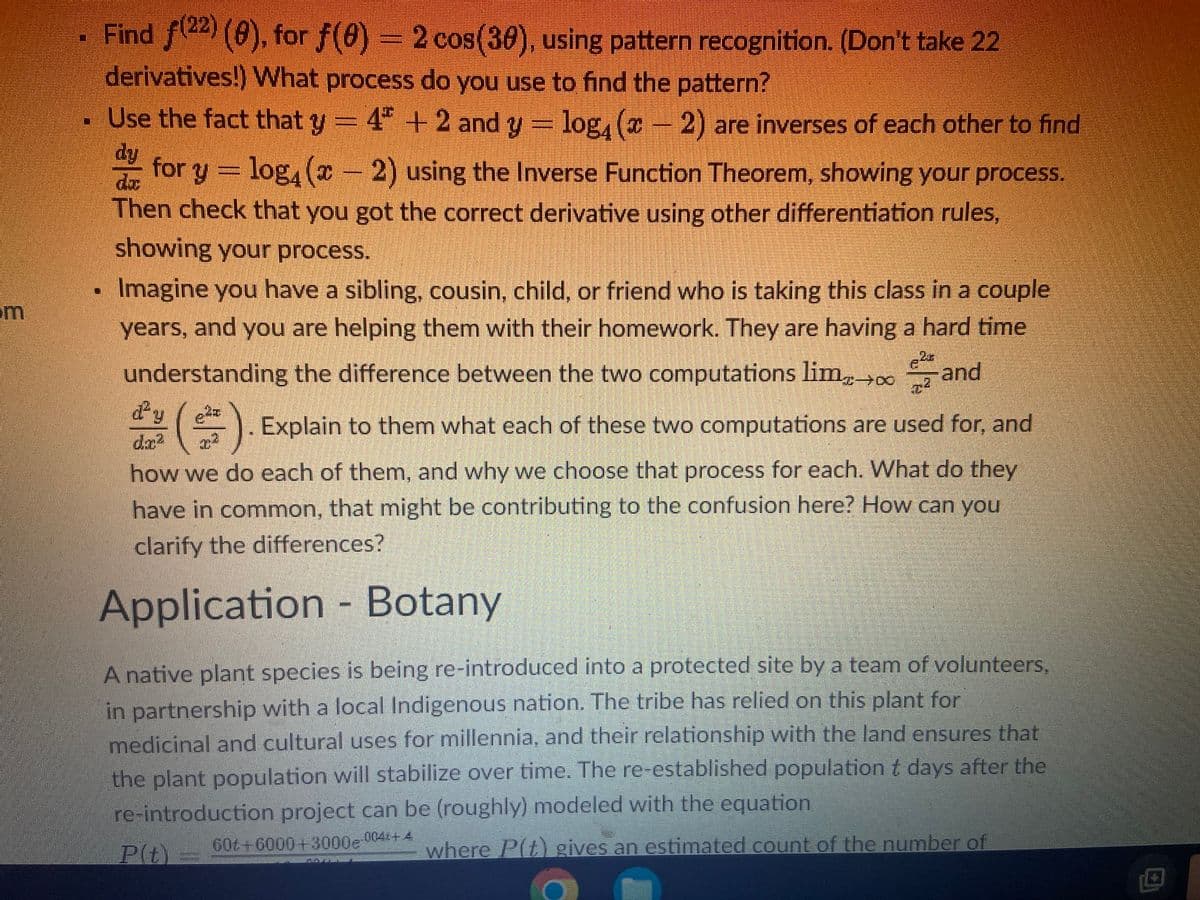Chapter3: Functions
Section3.4: Composition Of Functions
Problem 97SE: The number of bacteria in a refrigerated food product is given by N(T)=23T256T+1,3T33 ,where T is...
Related questions
Question
I am seeking help for the 3 bullet points above the Botany question only

Transcribed Image Text:Find f2) (0), for f(0) = 2 cos(30), using pattern recognition. (Don't take 22
derivatives!) What process do you use to find the pattern?
Use the fact that y = 4" + 2 and y log, (x 2) are inverses of each other to find
dy
for y log, (x - 2) using the Inverse Function Theorem, showing your process.
da
Then check that you got the correct derivative using other differentiation rules,
showing your process.
Imagine you have a sibling, cousin, child, or friend who is taking this class in a couple
om
years, and you are helping them with their homework. They are having a hard time
understanding the difference between the two computations lim,00
and
dy
da
. Explain to them what each of these two computations are used for, and
how we do each of them, and why we choose that process for each. What do they
have in common, that might be contributing to the confusion here? How can you
clarify the differences?
Application - Botany
A native plant species is being re-introduced into a protected site by a team of volunteers,
in partnership with a local Indigenous nation. The tribe has relied on this plant for
medicinal and cultural uses for millennia, and their relationship with the land ensures that
the plant population will stabilize over time. The re- established population t days after the
re-introduction project can be (roughly) modeled with the equation
P(t)
where P(t) gives an estimated count of the number of
Expert Solution
This question has been solved!
Explore an expertly crafted, step-by-step solution for a thorough understanding of key concepts.
Step by step
Solved in 3 steps with 1 images

Recommended textbooks for you


Algebra & Trigonometry with Analytic Geometry
Algebra
ISBN:
9781133382119
Author:
Swokowski
Publisher:
Cengage

College Algebra (MindTap Course List)
Algebra
ISBN:
9781305652231
Author:
R. David Gustafson, Jeff Hughes
Publisher:
Cengage Learning


Algebra & Trigonometry with Analytic Geometry
Algebra
ISBN:
9781133382119
Author:
Swokowski
Publisher:
Cengage

College Algebra (MindTap Course List)
Algebra
ISBN:
9781305652231
Author:
R. David Gustafson, Jeff Hughes
Publisher:
Cengage Learning